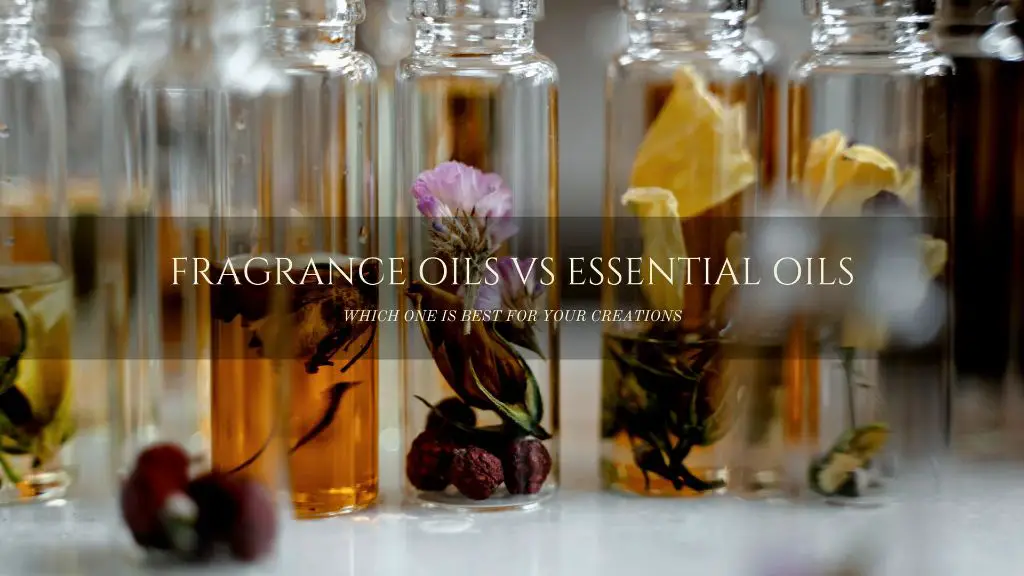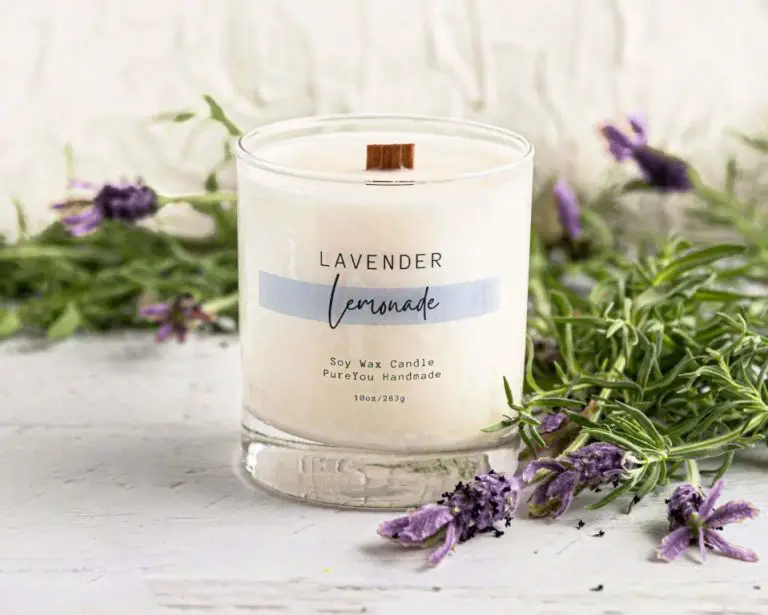Is It Better To Make Candles With Essential Oils Or Fragrance Oils?
Essential oils and fragrance oils are both commonly used in candle making. Essential oils are extracted from plants and capture the plant’s natural scent. Fragrance oils are synthetic scents created in a lab to mimic natural aromas or produce unique fragrance combinations. When deciding between essential oils versus fragrance oils for candle making, there are several factors to consider including aroma, cost, safety, availability, candle performance, and environmental impact.
This article provides an overview of the key differences between essential oils and fragrance oils for candles. We’ll explore the pros and cons of each to help you determine which oil is the better choice for your candle-making needs.
Essential Oils
Essential oils are concentrated extracts derived from the roots, leaves, seeds, or blossoms of plants. They contain the true essence of the plant’s fragrance and provide the plant’s “life force.” Unlike fatty oils like olive or coconut oil, essential oils are volatile, light, and ethereal in consistency.
There are numerous methods for extracting essential oils, including steam distillation, cold pressing, and solvent extraction. Steam distillation is the most common method. The plant material is placed in a still and pressurized steam is circulated through it. The hot steam forces open the pockets in which the oils are kept in the plant material. The vapors flow through a cooled condenser, where the vapors liquefy into water and essential oil.
The resulting mixture of oil and water is then separated. Since water and essential oils do not mix, the essential oil will be found on the surface of the water where it is siphoned off. This process allows for the purest essential oils to be extracted in a gentle manner without damaging the plant material.
Some common plants used for essential oils include lavender, peppermint, rosemary, tea tree, eucalyptus, lemongrass, and orange. Essential oils are highly concentrated and should always be diluted before use.
Fragrance Oils
Fragrance oils are synthetic oil-based compounds created to imitate natural scents and aromas. They are artificially created in laboratories by blending aromatic chemicals and carrier oils. Though some natural extracts may be used in the initial stages, fragrance oils do not contain natural essential oils.
The production process for fragrance oils is complex, involving many stages. It starts with the isolation of aromatic chemicals from natural substances like flowers, fruits, leaves, resins etc. Solvents are used to extract the aroma molecules from these natural sources. The extracted aromas are then combined and diluted with carrier oils, stabilizers, fixatives etc. to create the desired fragrance oil blend. Popular carrier oils used include mineral oil, vegetable oil, jojoba oil etc.
According to The Flaming Candle, some common aromatic ingredients used in fragrance oils include:
- Aldehydes – Provide fresh, clean aromas like linen, lemon, cucumber
- Esters – Give fruity scents like apple, banana, pear
- Alcohols – Used for delicate floral notes like lavender, rose, jasmine
- Ketones – Often used for musky, earthy smells
Fixatives like musk and ambergris are added for better scent retention. The resulting fragrance oil blend is then graded based on standard criteria.
Aroma
Essential oils are derived from natural botanical sources and thus have aromas that closely match the plant they were extracted from. For example, lavender essential oil smells like fresh lavender flowers. The aroma from essential oils comes directly from the natural chemical compounds within the plants themselves.
Fragrance oils, on the other hand, are synthetic fragrances created in a lab to smell like the natural oil or plant. While fragrance oils attempt to mimic essential oils, the aroma is typically less complex, layered, and nuanced. The synthetic compounds have a more uniform scent compared to the diverse complexity of compounds found within plants. Fragrance oils also tend to project their aromas more strongly at first, which some people find overwhelming.
In summary, essential oils provide natural, authentic aromas that closely replicate the live plants. Fragrance oils synthesize these aromas in a lab resulting in more simplistic scents that lack the depth and subtleties of essential oils.[1]

Cost
Essential oils are generally much more expensive than fragrance oils. This is because essential oils are derived directly from plants, requiring a tremendous amount of botanical material to produce a small amount of oil. According to Scented Designs, “A tiny 5ml jar of Rose essential oil costs around $200-$250 dollars (thanks to the 22 pounds of rose petals needed for just 1 oz of oil)” (Source). Fragrance oils, on the other hand, are synthetic blends that attempt to mimic essential oils at a fraction of the cost. BMV Fragrances notes that “Fragrance oils are significantly cheaper to produce than essential oils, with prices ranging from $1 per ounce to $20 per pound on average” (Source). For candle making, the dramatically lower cost of fragrance oils makes them the sensible choice for most crafters and small businesses.
Safety
When it comes to safety and toxicity, there are some concerns to consider with both essential oils and fragrance oils.
Essential oils are very concentrated and can cause skin irritation or allergic reactions if used undiluted on the skin. Certain essential oils like tea tree oil can be toxic for pets if ingested (The Problem with Fragrance Oils). Essential oils should always be used with care.
Fragrance oils also have some potential safety issues. Some fragrance oils contain phthalates, synthetic chemicals used to helpfragrance last longer, which may disrupt hormones and cause health issues (Are Fragrance Oils Safe?). Not all fragrance oils contain phthalates, but it’s important to source high-quality fragrance oils from reputable suppliers.
Both essential oils and fragrance oils can be irritants for sensitive individuals. Proper precautions should be taken, like avoiding excessive inhalation and doing a patch test before wide-spread use.
Availability
Essential oils can be more difficult to source than fragrance oils. Essential oils are extracted from plants, flowers, and herbs through methods like steam distillation or expression. The raw plant materials needed can be subject to issues like shortages, poor harvests, and sourcing difficulties that limit availability of the resulting essential oil. Specific essential oils like rose, jasmine, and sandalwood are particularly known for being low in availability and high in price. There are only a handful of regions in the world capable of producing these oils. In contrast, fragrance oils are synthetically created in labs so there are fewer supply constraints. The raw ingredients for fragrance oils are relatively inexpensive and widely available. This means fragrance oil manufacturers can easily scale production to meet demand.[1]
Candle Performance
Both essential oils and fragrance oils can impact how a candle burns and performs. When adding oils to candles, it’s important not to overload the wax, as too much oil can lead to issues like poor scent throw, uneven burning, or even smoking and sooting.
Essential oils contain natural compounds, so they can be more volatile and evaporate quickly when heated. This means candles made with essential oils may scent a room faster initially, but the aroma may fade more quickly. Too much essential oil can also make candles burn hotter and faster. According to Does adding essential oils to your candle make it burn … – Quora, adding over 5% essential oil to soy wax can increase the burn rate.
Fragrance oils tend to be more stable in candles. They often contain synthetic fragrance molecules designed to disperse and release scent steadily as the candle burns. This provides for a more consistent and longer-lasting aroma. But heavily overloading fragrance oil can still lead to issues like tunneling.
No matter which oil is used, following usage rates and testing different blends is key for optimal candle performance. Generally 3-5% oil to wax is recommended for both essential and fragrance oils.
Environmental Impact
When considering the environmental impact of essential oils versus fragrance oils, essential oils tend to be viewed as the more sustainable and eco-friendly choice. Essential oils are derived from plants and are biodegradable, while many of the synthetic chemicals used in fragrance oils are made from petroleum, a non-renewable resource. According to source, some fragrance oil ingredients do not fully biodegrade and can persist in the environment.
Essential oils come directly from plants and do not require extensive processing and chemical alterations. Fragrance oils involve more complex manufacturing processes that use energy and create emissions. The natural extraction process for essential oils has a lighter environmental footprint compared to the industrial production of fragrance oils. This makes essential oils generally a greener choice. However, it’s worth noting that certain heavily harvested essential oils like rosewood may raise sustainability concerns as well.
Overall, essential oils derived from abundant plant sources through careful and efficient extraction methods tend to be more eco-friendly than synthetic fragrance oils. When making candles, opting for essential oils with responsible sourcing is an effective way to reduce the environmental impact.
Conclusion
Both essential oils and fragrance oils have their pros and cons when making candles. Essential oils provide a more natural aroma, but can be more expensive and harder to source. Fragrance oils often use synthetic ingredients, but offer consistent scents at a lower cost. When it comes to safety and performance, fragrance oils tend to burn cleaner while essential oils can produce more soot.
In the end, the choice comes down to personal preference. If you want an all-natural candle and don’t mind paying a premium, go for essential oils. But if cost and availability are concerns, fragrance oils will likely be the better option. Test out both to see which you prefer in your homemade candles. The most important factors are finding scents you enjoy while keeping safety in mind during the candlemaking process.



